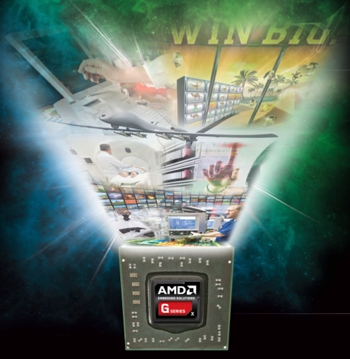AMD announced its G-series embedded APUs this morning comprising three quad core parts and a couple of dual cores, four of them integrating Radeon HD 8000 grahics and an I/O module on a single piece of silicon. With power envelopes in the 9-25W range, the new chips are targeted at industrial control and automation, digital signage, gaming systems (they use the same Jaguar cores that power Sony's PS4), SMB storage, IP-TV, set-top boxes and more.
While the chips themselves are noteworthy as AMD places an increased emphasis in the embedded market, Engadget points out another interesting tidbit that was left unmentioned in the press release. Namely, the inclusion of a small 'X' at the bottom right corner of the G-series logo, which the site has since been able to verify it stands for the x86 architecture as the company hints at future ARM-based variants that could be marked with an 'A'.
AMD first announced plans for a highly-integrated, 64-bit ARM multicore System-on-a-Chip (SoC) for dense, energy-efficient servers back in October 2012 – aiming for a 2014 release.
While in this case no specific ARM products have been announced, Arun Iyengar, AMD's general manager for the embedded solutions group did confirm that "ultimately" they'll have ARM in the product portfolio. This is the first time an ARM-Radeon combo has been suggested as a main application processor, which could mean the company is considering expanding its use of the architecture for low-power applications.
Wether they'll eventually turn to ARM to finally break into the tablet segment remains to be seen. For now the company plans to attack this market with the 28nm "Temash" APU, which is set to replace the Hondo-based Z-Series offering double the graphics performance later this year.
